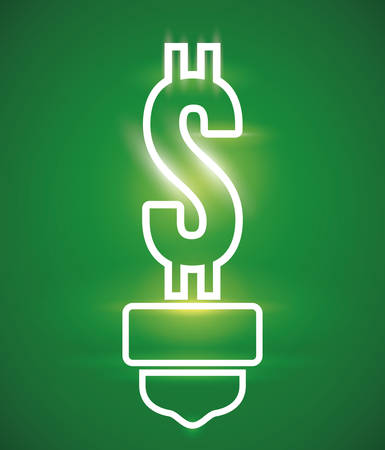Overview of Depreciation in Property Insurance
When you file a property insurance claim in the United States, one of the first concepts you’ll encounter is depreciation. In simple terms, depreciation refers to the decrease in value of your belongings over time due to age, wear and tear, or obsolescence. For example, let’s say a fire damages your ten-year-old refrigerator. Even if it originally cost $1,200, it won’t be worth that much at the time of loss. Insurance companies calculate its current value by considering how long refrigerators typically last and subtracting value for each year it was used. The same principle applies whether you’re claiming for a worn-out roof after a hailstorm in Texas or a decades-old sofa damaged by water in Florida. Understanding how depreciation works can mean the difference between getting enough money to replace your items or facing out-of-pocket expenses. This is why knowing your policy’s approach to depreciation—whether it pays actual cash value (ACV) or replacement cost—is crucial before disaster strikes.
2. How Replacement Cost Coverage Works
Replacement cost coverage is a critical concept in U.S. property insurance, especially when dealing with home or business property claims. Simply put, replacement cost coverage pays you the amount needed to replace damaged or destroyed property with new items of similar kind and quality—without deducting for depreciation. This differs significantly from actual cash value (ACV), which only reimburses you for the depreciated value of your lost or damaged property.
To better understand these differences, see the comparison below:
| Coverage Type | Payout Calculation | Example Scenario |
|---|---|---|
| Replacement Cost | Cost to buy new, similar item today | Your 5-year-old TV is stolen; you receive enough to buy a brand-new TV of similar features |
| Actual Cash Value (ACV) | Replacement cost minus depreciation | Your 5-year-old TV is stolen; you receive the current market value for a used 5-year-old TV |
This distinction is crucial for American policyholders because most personal belongings and home fixtures lose value over time due to wear and tear, age, and usage. Without replacement cost coverage, you may find yourself seriously underfunded after a loss—making it difficult to repair or replace your property adequately. For example, if your kitchen appliances are damaged in a fire and you only have ACV coverage, your payout might not be enough to purchase new appliances. With replacement cost coverage, you get the funds necessary to restore your home to its pre-loss condition using new materials or items.
Keep in mind: many U.S. insurers require you actually replace the item before they pay out the full replacement cost. Initially, they may issue a payment based on ACV, then reimburse the difference after you submit receipts showing you’ve made the purchase. If you don’t complete the replacement within a specified timeframe (often 180 days), you might be stuck with just the depreciated payout. Always check your policy’s fine print for these requirements so you don’t miss out on what you’re entitled to.

3. Calculating Depreciation: What Insurers Consider
When you file a property claim, understanding how your insurer calculates depreciation is crucial—because it directly impacts the payout amount you receive. Insurers generally use specific methods to determine how much value your damaged or lost property has lost over time. Let’s break down the main factors they consider and the standard approaches they use in the U.S.
Key Factors in Depreciation Calculation
Age of the Item: The older the item, the more depreciation is typically applied. For example, a five-year-old washing machine will have a higher percentage of its value depreciated compared to one that’s only a year old.
Condition Before Loss: Was your roof already showing signs of wear and tear? Insurers assess whether an item was well-maintained or already deteriorating before the incident. Poor condition can increase depreciation, reducing your claim payout.
Type of Property: Not all items depreciate at the same rate. Electronics, for instance, lose value much faster than solid wood furniture. Insurers apply different “useful life” schedules depending on what was damaged.
Common Depreciation Methods Used by Insurers
Straight-Line Depreciation
This is the most common method. The insurer determines the expected useful life of an item (say, 10 years for a refrigerator), then deducts equal value each year. So if your fridge was five years old at the time of loss, it would be considered halfway through its useful life—and you’d only be eligible for half its replacement cost under an Actual Cash Value (ACV) policy.
Market Value Adjustment
Sometimes, especially with unique or high-value items, insurers look at current market trends to adjust depreciation. If your antique desk has actually increased in value due to rarity or demand, this could work in your favor—but don’t count on it unless you have appraisals and documentation.
Functional Obsolescence
If newer models with better features are available, insurers may argue that your item is worth less—not just because of age or wear but because it’s outdated. This can further reduce your payout.
Depreciation Can Be Negotiable
If you believe your property was in better shape than what’s reflected in the adjuster’s estimate, gather maintenance records, photos, or receipts to challenge excessive depreciation. Remember: Insurers often default to standard tables and formulas, but real-life conditions matter too.
Understanding these methods empowers you to review your settlement offer critically—and ensures you’re not leaving money on the table due to avoidable depreciation deductions.
4. Real-World Claim Scenarios: Depreciation vs. Replacement Cost
Understanding how depreciation and replacement cost coverage play out in real property insurance claims can make a big difference when it comes to your payout. Let’s dive into two practical examples—appliance damage and roof replacement—to see how each coverage type works in action.
Appliance Damage: Actual Cash Value vs. Replacement Cost
Suppose a kitchen fire damages your 8-year-old refrigerator. The original price was $1,200, but the average lifespan of a fridge is about 12 years. Here’s how the claim might be calculated:
| Actual Cash Value (ACV) | Replacement Cost Value (RCV) | |
|---|---|---|
| Original Cost | $1,200 | $1,200 |
| Depreciation (8/12 years used = 66%) | – $792 | $0 |
| Payout Before Deductible | $408 | $1,200 |
Key takeaway: With ACV coverage, you get a payout reduced by depreciation. With RCV coverage, you’re reimbursed for the full cost to replace the fridge with a new one of similar kind and quality, after paying your deductible.
Roof Damage After a Storm: The Numbers Matter
If a hailstorm destroys your 15-year-old roof originally installed for $10,000, but it now costs $15,000 to replace due to rising material prices, here’s what you could expect:
| Actual Cash Value (ACV) | Replacement Cost Value (RCV) | |
|---|---|---|
| Current Replacement Cost | $15,000 | $15,000 |
| Depreciation (roof expected life: 20 years; 15/20 = 75% used) | – $11,250 | $0 |
| Payout Before Deductible | $3,750 | $15,000 |
Caution: Many homeowners are surprised at how much depreciation reduces their claim if they only have ACV coverage—especially for older roofs or appliances. Always check your policy and clarify which payout method applies before disaster strikes!
5. Common Reasons for Denial or Reduction in Payouts
When filing a property claim, its crucial to be aware of common pitfalls that can lead to denied or reduced payouts. One major issue is underinsurance. Many homeowners underestimate the cost to replace their property, leading to insufficient coverage. In the event of a loss, insurance companies only pay up to the policy limits, often leaving claimants with unexpected out-of-pocket expenses. Another frequent cause for claim denial is a lack of documentation. Insurers require proof of ownership and value for damaged items—without receipts, photos, or inventory lists, your claim may be delayed or rejected altogether.
Misunderstandings About Policy Terms
Many policyholders are caught off guard by fine print in their insurance contracts. For example, some policies only cover actual cash value (ACV), which factors in depreciation, rather than full replacement cost. If you assume your policy offers replacement cost coverage but it actually pays out based on ACV, your payout will be significantly less than expected. Its essential to review your policy details carefully and clarify any ambiguities with your agent before disaster strikes.
Failure to Meet Reporting Deadlines
Most insurance companies set strict deadlines for reporting property losses and submitting documentation. Missing these timelines—even unintentionally—can result in a denied claim. Always report damage as soon as possible and keep copies of all communications with your insurer.
Neglecting Regular Maintenance
Insurance doesnt typically cover losses due to neglect or lack of maintenance. If an adjuster determines that damage was caused by wear and tear rather than a sudden event, your claim could be denied. Regularly maintain your property and document repairs to avoid disputes over coverage.
By understanding these common issues and proactively managing your insurance responsibilities, you can reduce the risk of surprises during the claims process. Take time now to review your policy terms, assess your coverage limits, and organize supporting documentation—these steps can make all the difference if you ever need to file a claim.
6. Tips to Maximize Your Property Claim Settlement
Getting the most out of your property claim isn’t just about knowing what’s covered—it’s also about how you present your loss and avoid common mistakes that lead to reduced payouts or outright denials. Here’s how to ensure your claim reflects the true value of your damaged property and steers clear of frequent pitfalls.
Document Everything Thoroughly
Start by taking detailed photos and videos of the damage as soon as it happens. Keep receipts, maintenance records, and appraisals on hand for all major items. The more proof you have of ownership, age, and condition, the stronger your case when it comes to establishing value before depreciation is applied.
Understand Policy Terms—Especially Depreciation and Replacement Cost
Read your policy carefully to know whether you’re covered for Actual Cash Value (ACV) or Replacement Cost Value (RCV). Remember: ACV factors in depreciation, while RCV pays the cost to replace the item at today’s prices. If you’re unsure, ask your agent to explain these terms using examples relevant to your home or business.
Get Your Own Estimates
Don’t rely solely on the insurance adjuster’s assessment. Obtain independent repair or replacement estimates from licensed contractors or local suppliers. This helps challenge lowball offers and provides leverage if there’s a dispute over costs or depreciation amounts.
File Promptly and Respond Quickly
Delays can hurt your claim. File as soon as possible after damage occurs, and respond quickly to insurer requests for information. Waiting too long may result in denied claims or unnecessary scrutiny over whether damages were related to the covered event.
Avoid Common Pitfalls Leading to Denial
Be honest in all communications—misrepresentation is grounds for denial. Don’t discard damaged items until your insurer inspects them. Also, failing to mitigate further damage (like making temporary repairs) could void coverage. Follow policy requirements precisely and consult with a public adjuster or attorney if you hit roadblocks.
Keep Communication in Writing
Whenever possible, communicate with your insurer via email or written letter. This creates a paper trail showing what was said, promised, or requested—a valuable asset if disputes arise later.
By following these practical steps, policyholders can help ensure their claims accurately reflect the property’s value both before and after depreciation is factored in, giving themselves the best chance at a fair settlement under their replacement cost or actual cash value coverage.


